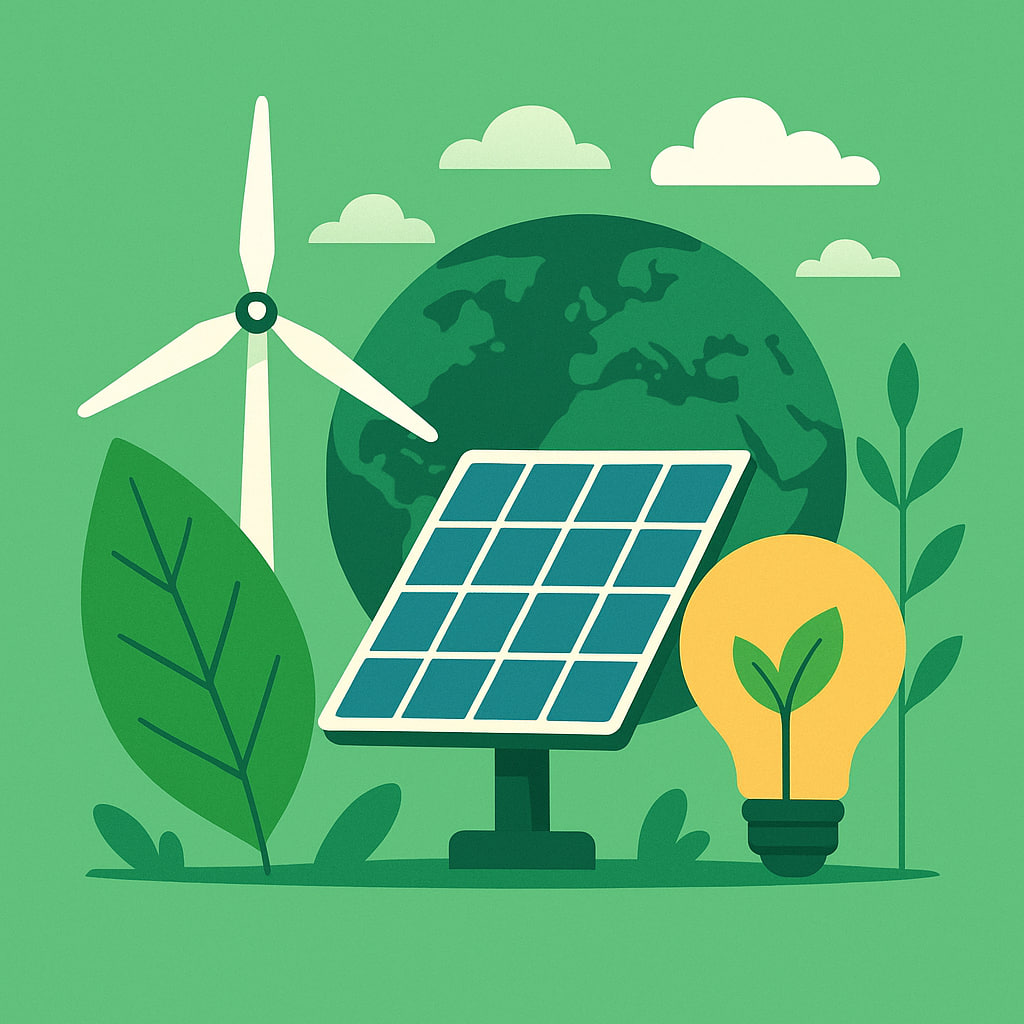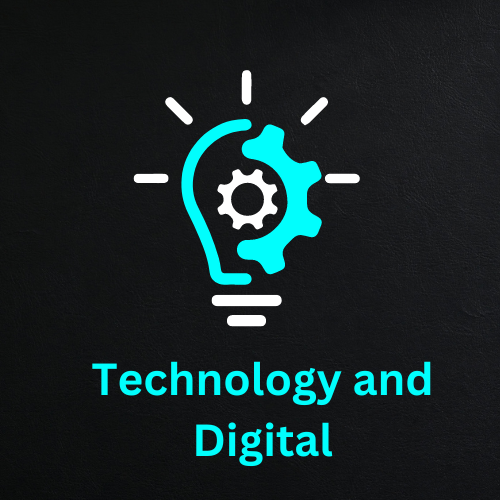Green Technology – How Sustainable Tech Is Powering a Cleaner Future

As climate concerns grow and global energy demands increase, green technology—often called sustainable technology—has become one of the most influential forces shaping the 21st century. From renewable energy and electric vehicles to smart cities and circular economies, innovation is driving a massive shift toward sustainability. This transformation is not just about saving the planet; it’s about redefining how industries, governments, and individuals approach progress.
What Is Green Technology?
Green technology, or sustainable technology, refers to innovations designed to reduce environmental impact and promote long-term ecological balance. These solutions often focus on minimizing carbon emissions, conserving resources, and creating cleaner alternatives to traditional industrial processes. The goal is to meet today’s needs without compromising the ability of future generations to meet theirs.
In practical terms, green tech includes renewable energy systems, electric vehicles, sustainable manufacturing methods, waste-to-energy innovations, and digital solutions that help manage resources more efficiently. In 2025, global investment in clean technologies is projected to exceed $2.5 trillion, reflecting a global commitment to sustainability and low-carbon development.
Why It Matters
Global carbon emissions continue to rise, and extreme weather events are becoming more frequent. Green tech offers a practical response—transforming how energy is produced, consumed, and stored. Beyond environmental benefits, it also supports economic growth by creating millions of green jobs and fostering innovation across sectors like construction, transport, and energy.
Practical Tip:
Organizations can begin their green tech journey by auditing current energy use and identifying areas where renewable alternatives or efficiency upgrades can reduce both costs and emissions.
Key Innovations Driving Green Technology in 2025
Several major innovations are defining the green tech movement this year, each addressing unique aspects of sustainability while contributing to a global transition toward clean energy and responsible consumption.
1. Renewable Energy Systems
Renewable energy remains the backbone of green technology. Solar and wind power now generate over 40% of new global electricity capacity, according to recent energy reports. Thanks to advances in photovoltaic efficiency and offshore wind engineering, renewable energy has become not only cleaner but also cheaper than fossil fuels in most regions.
Emerging projects like floating solar farms and hybrid renewable grids are pushing innovation further, enabling energy production in places once considered unsuitable. Combined with AI-driven analytics, smart grids now balance electricity supply and demand in real-time, minimizing waste and improving grid reliability.
Practical Tip:
Homeowners can explore community solar programs, which allow individuals to benefit from solar power without installing panels directly on their property.
2. Sustainable Transportation
Transportation accounts for nearly one-quarter of global emissions, making it a key area for sustainable innovation. In 2025, electric vehicles (EVs) are expected to surpass 20 million global sales, driven by declining battery costs and expanding charging infrastructure. Major automakers are phasing out combustion engines entirely by 2035, signaling a long-term commitment to zero-emission mobility.
Meanwhile, hydrogen fuel cell technology is gaining traction for heavy-duty transportation—such as trucks, trains, and ships—where traditional batteries are less efficient. Cities are also adopting electric buses and integrating AI-powered traffic systems to reduce congestion and emissions simultaneously.
Practical Tip:
When considering an electric vehicle, compare models not just on price but also on battery longevity and charging options in your local area.
3. Circular Economy and Green Manufacturing
Traditional manufacturing often follows a “take, make, waste” model. The circular economy turns this idea on its head by designing products for reuse, recycling, and minimal waste. Companies are now using recycled metals, biodegradable plastics, and modular designs to create products that last longer and are easier to repair.
3D printing and automation play an important role, enabling efficient production with less material waste. Some smartphone brands now produce devices from 100% recycled aluminum, while fashion brands use AI to forecast demand accurately, reducing overproduction and waste.
Practical Tip:
Consumers can support sustainability by choosing products made from recycled or upcycled materials and by repairing items rather than replacing them prematurely.
4. Smart Cities and IoT Solutions
Smart cities represent the fusion of technology and sustainability. Through the Internet of Things (IoT), city systems—such as lighting, waste collection, and public transport—are becoming interconnected and data-driven. This integration allows for more efficient resource management and reduced urban emissions.
For instance, smart streetlights adjust brightness based on real-time conditions, cutting energy use by up to 70%. AI-based traffic systems analyze congestion patterns to reduce idle times, and connected sensors monitor air quality, enabling cities to take rapid action when pollution levels rise.
Practical Tip:
Local governments can start small by implementing smart waste bins or adaptive lighting systems that reduce energy costs while improving city livability.
5. Green Data Centers and Cloud Sustainability
The digital world runs on data centers, which consume vast amounts of electricity. In response, companies are investing in green data centers powered by renewable energy and cooled using innovative methods like liquid immersion or outdoor air. Major cloud providers such as Google, Microsoft, and AWS have committed to achieving net-zero carbon operations by 2030.
Edge computing is another development reducing energy waste by processing data closer to its source, minimizing transmission loads and latency. These shifts are crucial in supporting sustainable digital transformation without compromising performance.
Practical Tip:
Businesses relying on cloud services can evaluate providers based on their sustainability commitments and choose partners using 100% renewable energy.
Challenges Facing Green Technology
Despite its promise, sustainable technology faces ongoing challenges that require global collaboration and innovation. High upfront costs remain a hurdle for individuals and small businesses, although long-term savings often outweigh initial investment. Infrastructure limitations—such as inadequate energy grids or limited EV charging networks—also slow adoption in developing regions.
Another issue is resource dependency. Technologies like batteries and wind turbines rely on rare minerals, which can create new environmental and ethical concerns. Responsible sourcing, recycling, and alternative materials are essential to avoid repeating old mistakes in new forms.
Practical Tip:
Governments and businesses can work together to create incentive programs for green adoption while investing in research for sustainable material alternatives.
The Role of Artificial Intelligence in Green Innovation
Artificial intelligence (AI) has become a silent partner in sustainability. AI tools optimize energy consumption, predict maintenance needs, and help manage complex systems like power grids or supply chains. Predictive analytics can anticipate peaks in energy demand, while machine learning models help identify where efficiency improvements are most needed.
In agriculture, AI-powered drones monitor crop health and irrigation needs, reducing water and fertilizer waste. In manufacturing, smart sensors detect equipment inefficiencies early, saving both energy and resources.
Practical Tip:
Businesses adopting AI should focus on small, high-impact use cases—such as energy management systems—that can demonstrate clear returns on investment while improving sustainability outcomes.
What the Future Holds for Green Tech
The future of sustainable technology is moving from optional to essential. As climate goals tighten and regulations evolve, businesses that fail to adapt risk being left behind. The next generation of green tech innovations will likely focus on carbon-negative materials, decentralized energy systems, and bioengineering solutions that enhance natural ecosystems.
Beyond innovation, education and collaboration will be critical. A sustainable future requires not only new tools but also new mindsets—where technology, policy, and public awareness work hand-in-hand to create lasting change.
Conclusion: A Shared Responsibility for a Greener World
Green technology is more than a technological movement—it’s a cultural shift. Each innovation, from renewable energy to smart devices, brings humanity closer to a balanced relationship with nature. The progress seen in 2025 proves that sustainable technology is not only achievable but profitable and practical.
What’s your experience with green technology? Have you tried renewable energy solutions or eco-friendly products in your daily life? Every small decision contributes to a bigger transformation. Check out resources from local sustainability groups and join the conversation about how technology can help create a cleaner, smarter, and more sustainable world.
Call to Action: Stay informed, stay inspired, and take action. The future of green tech depends on collective innovation and responsibility—starting today.



